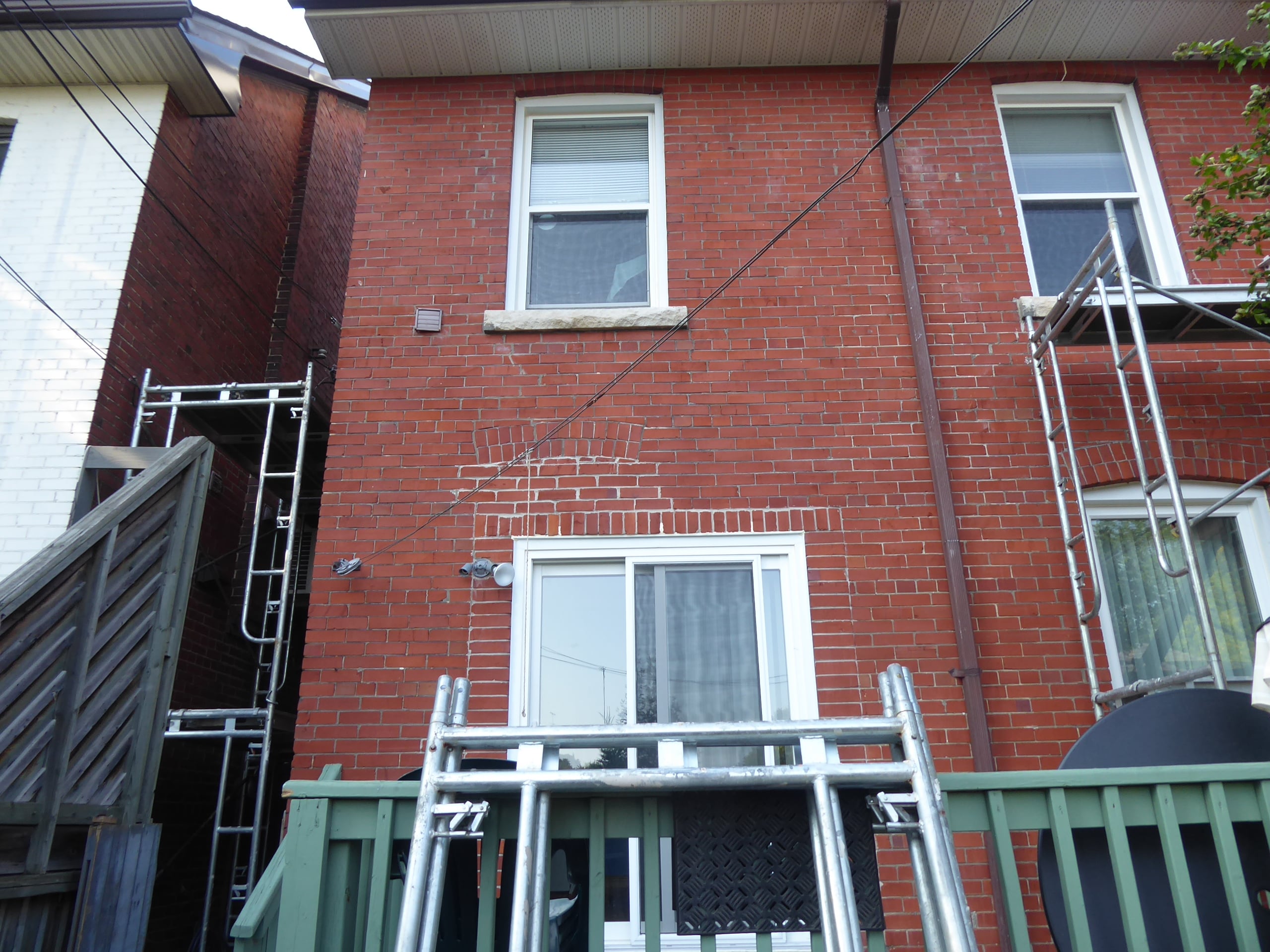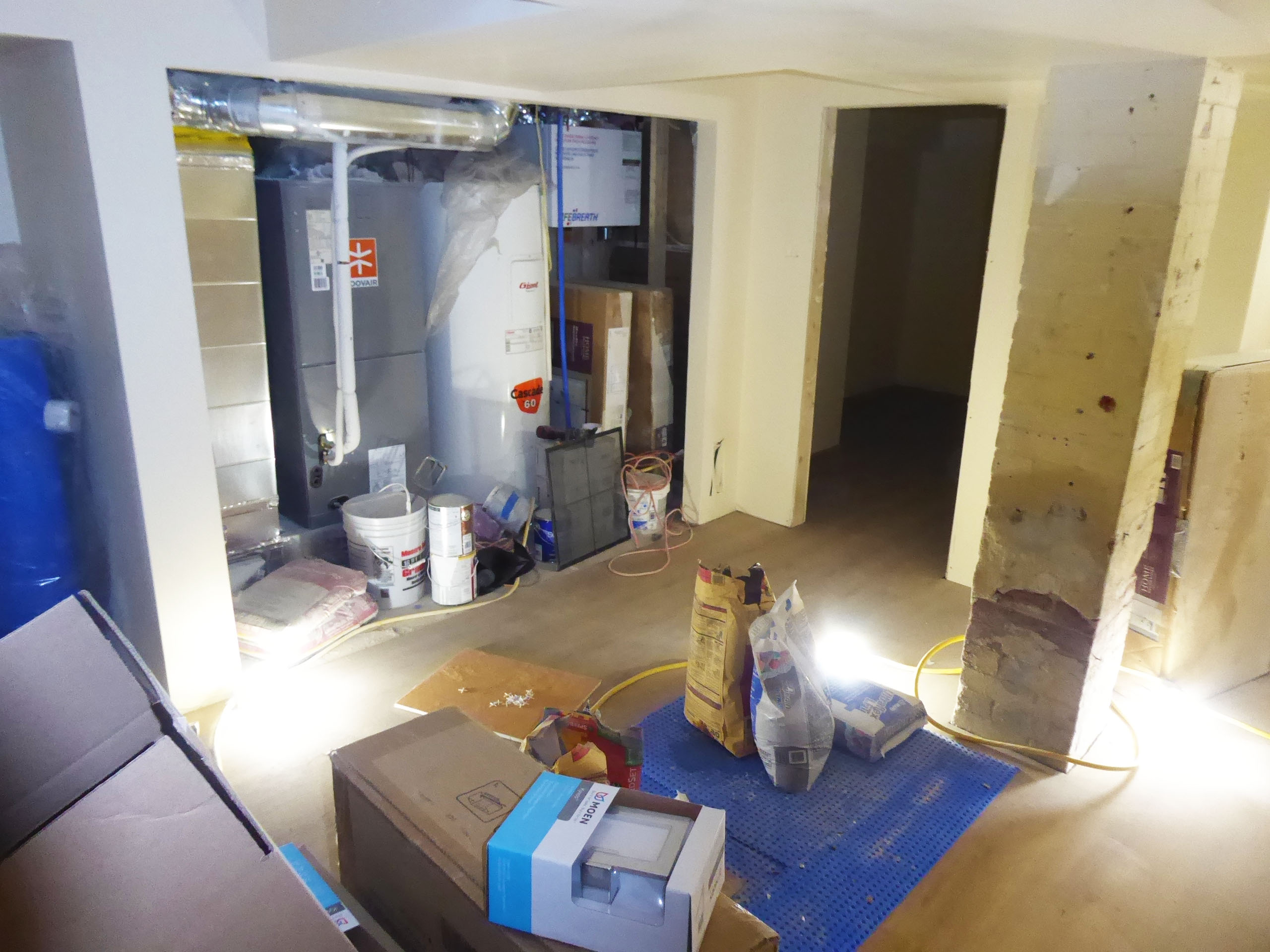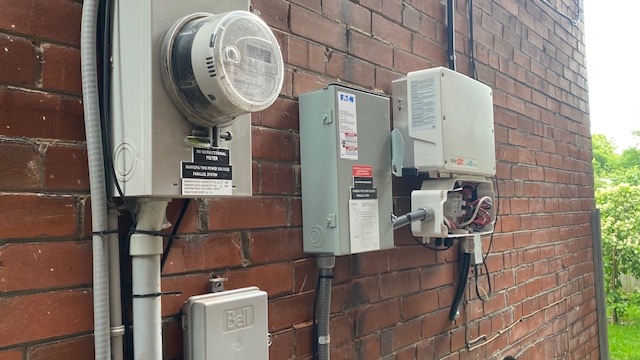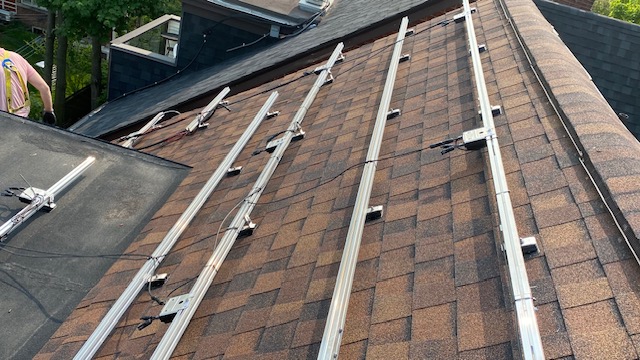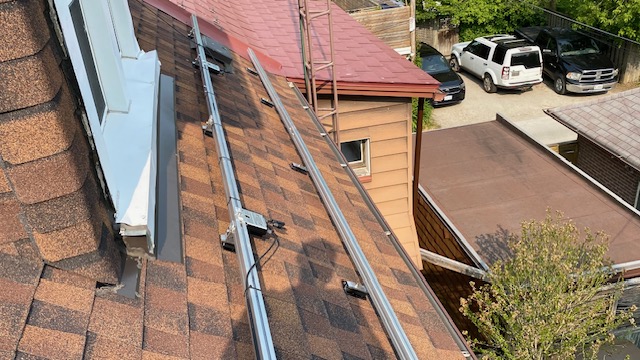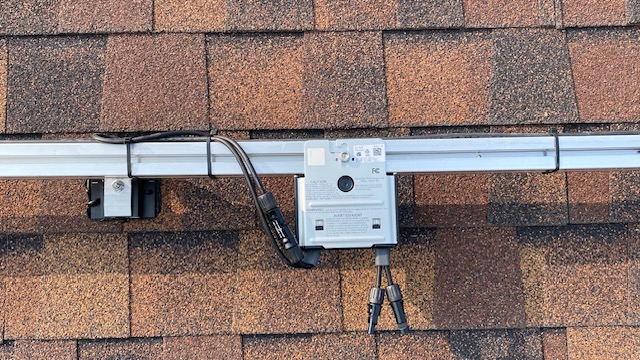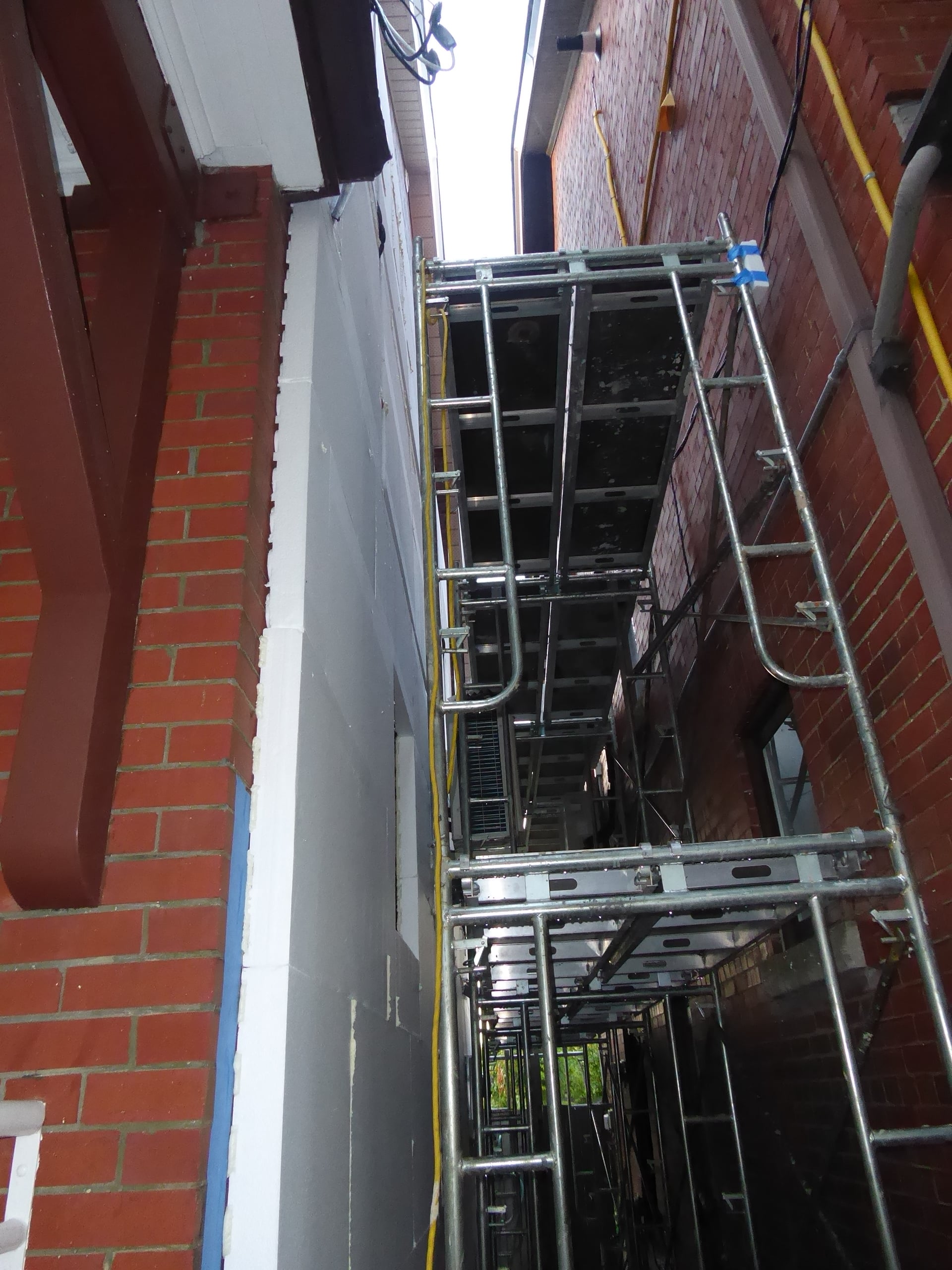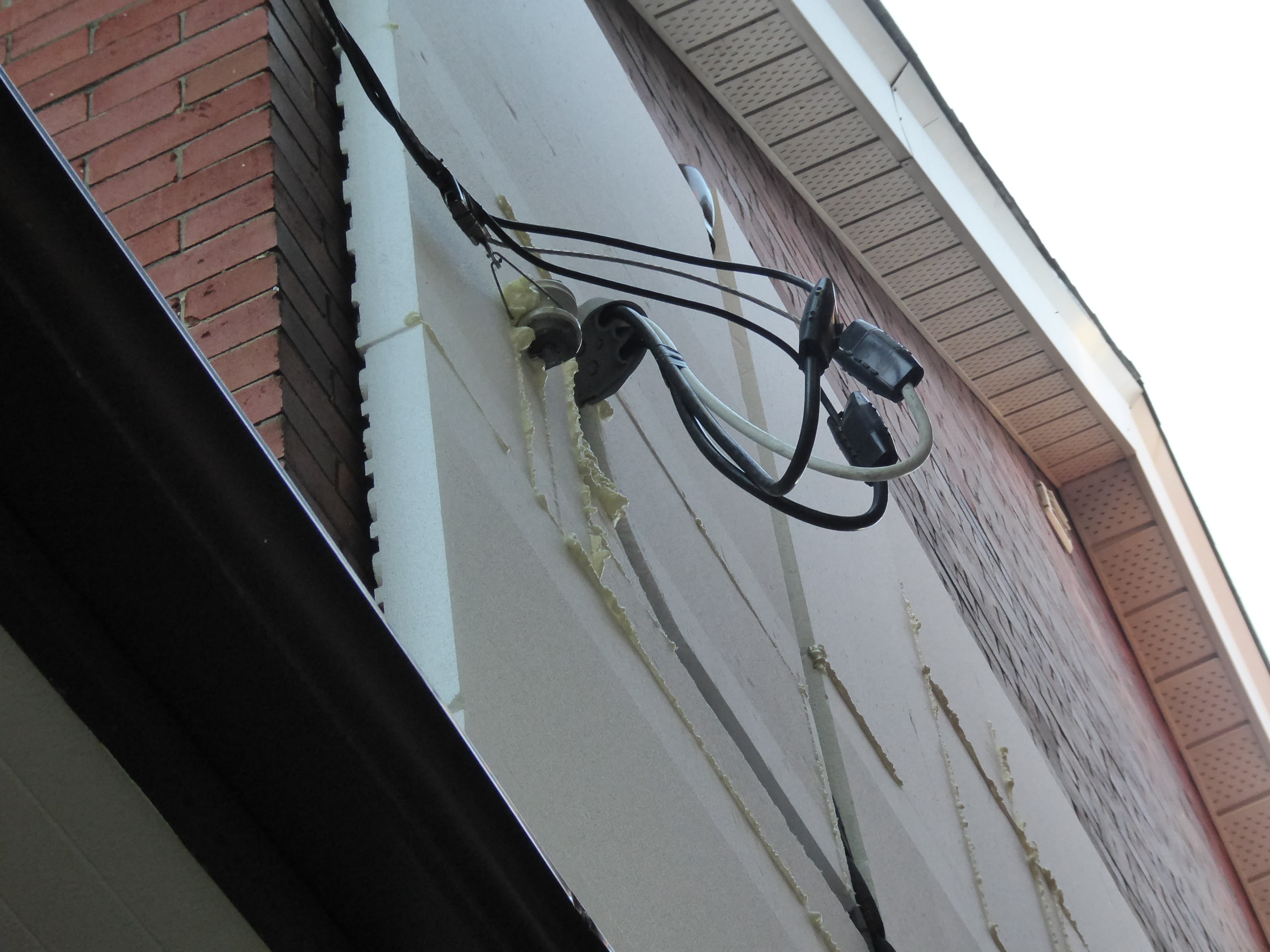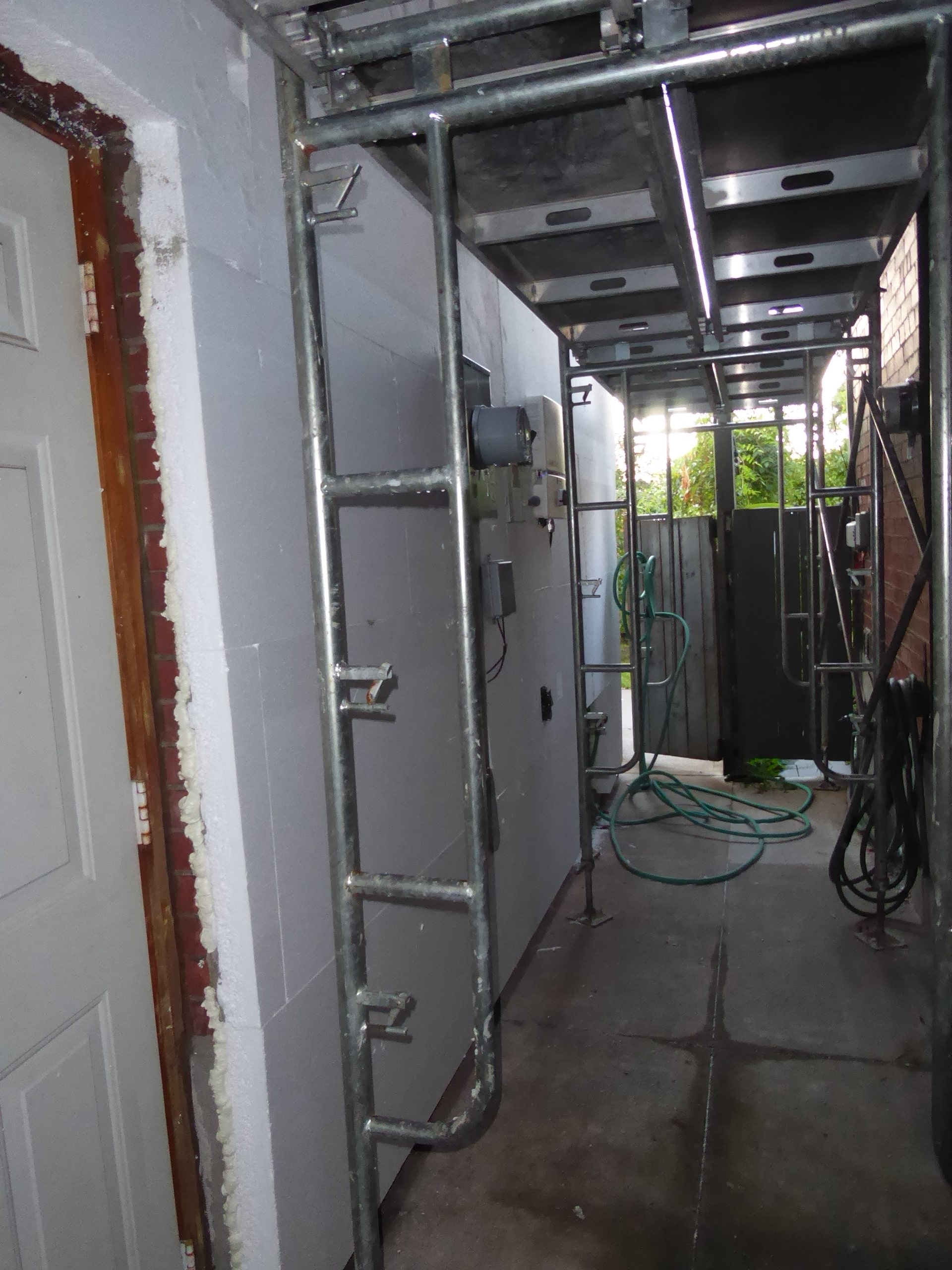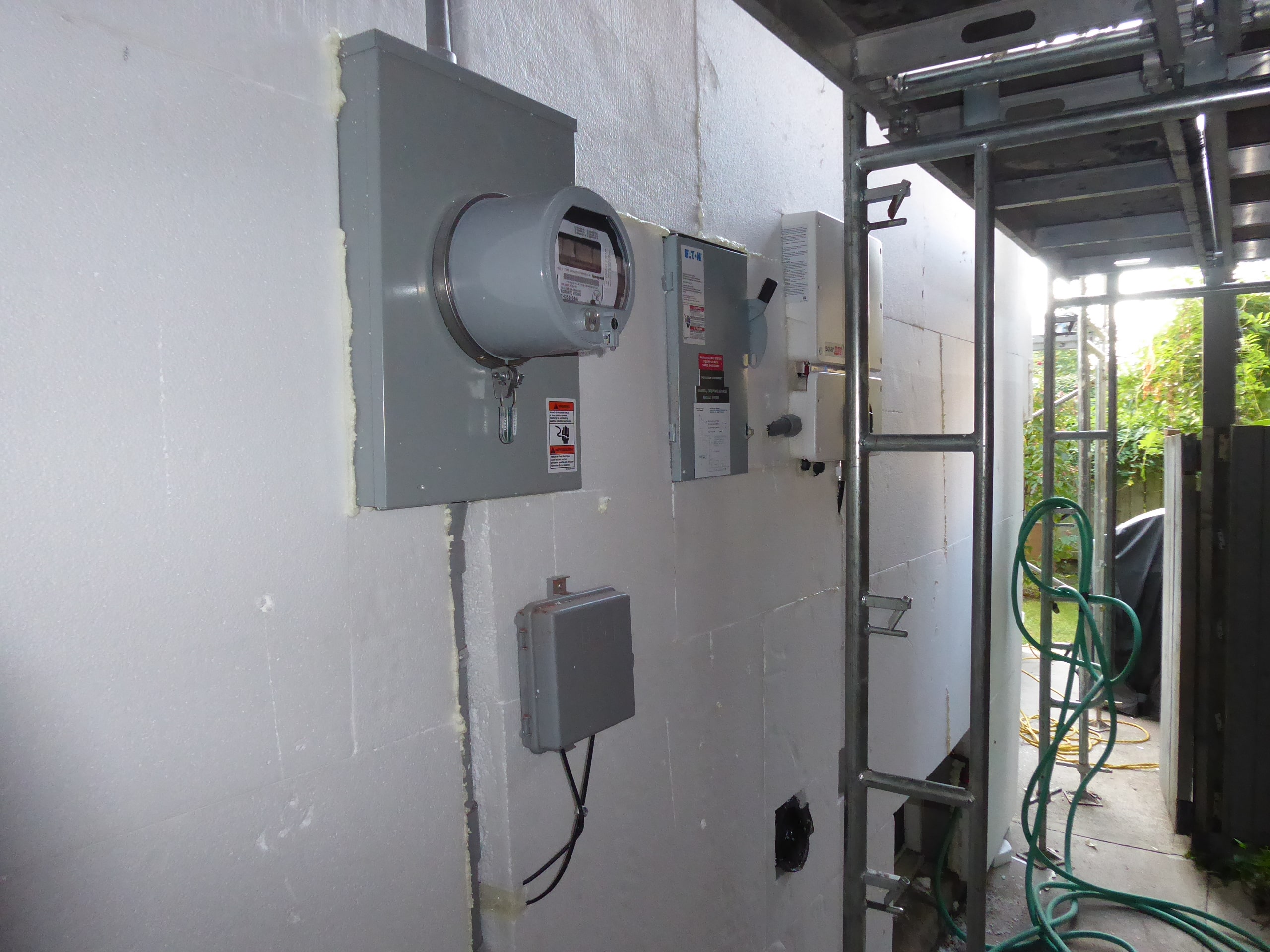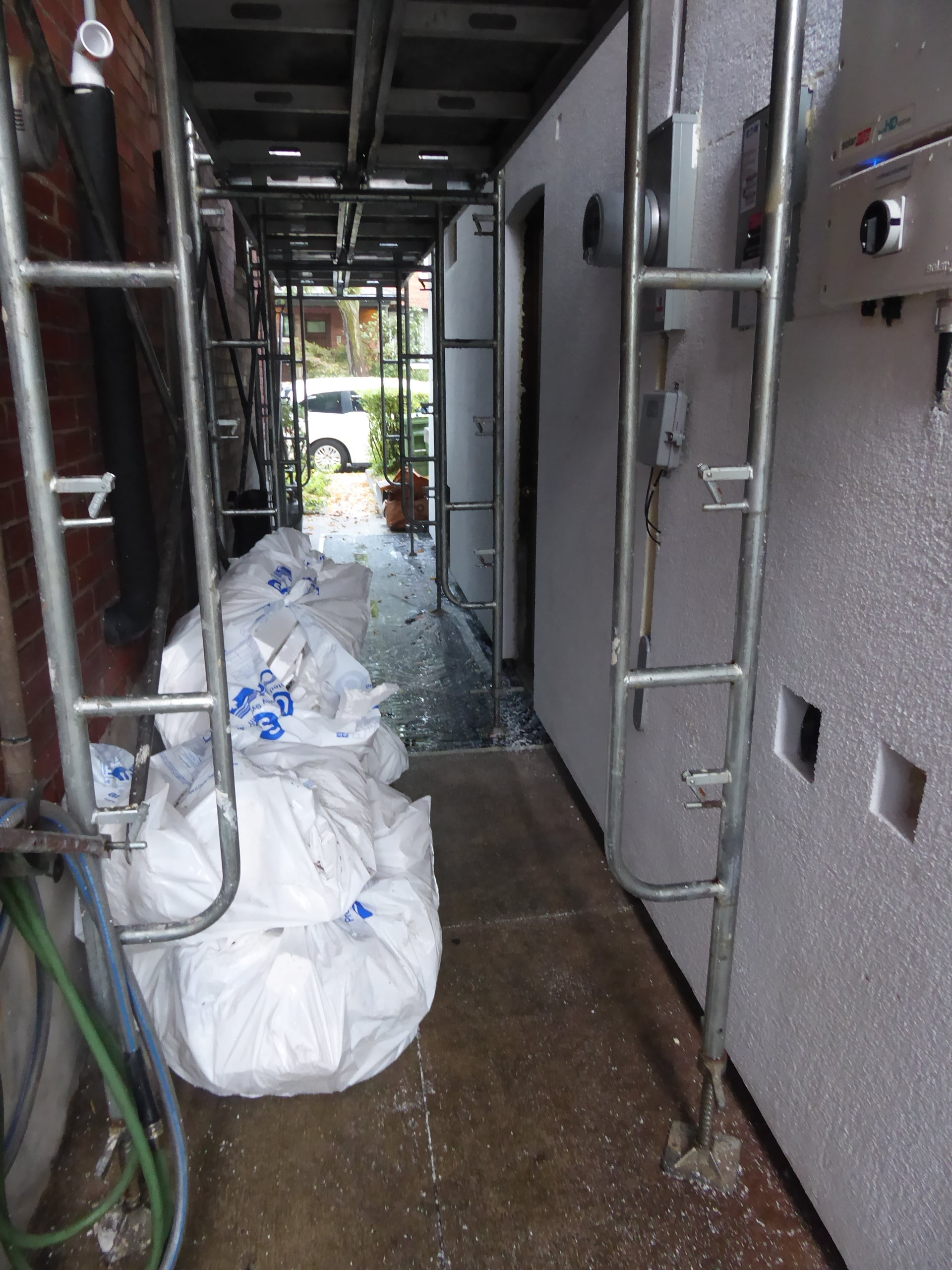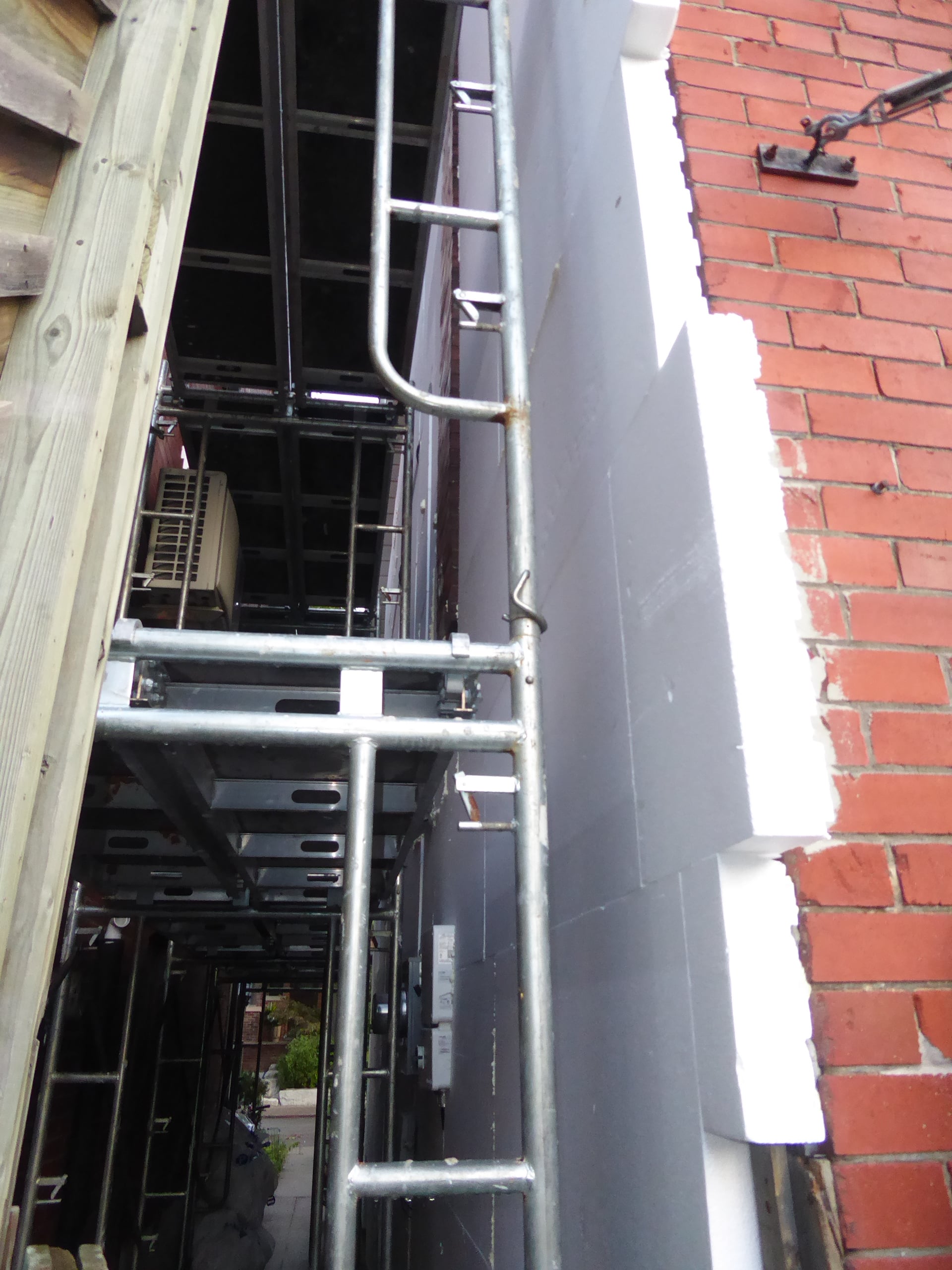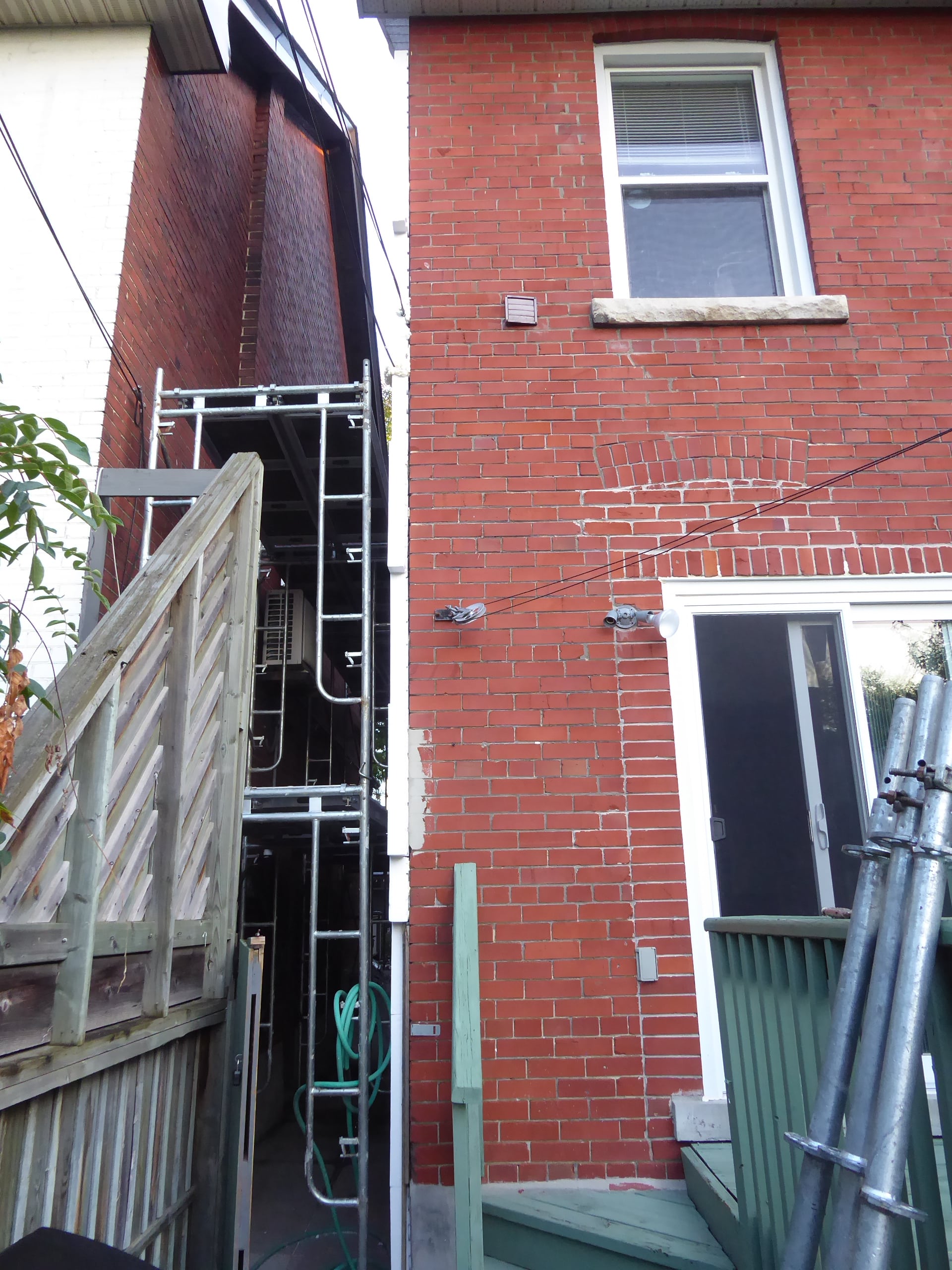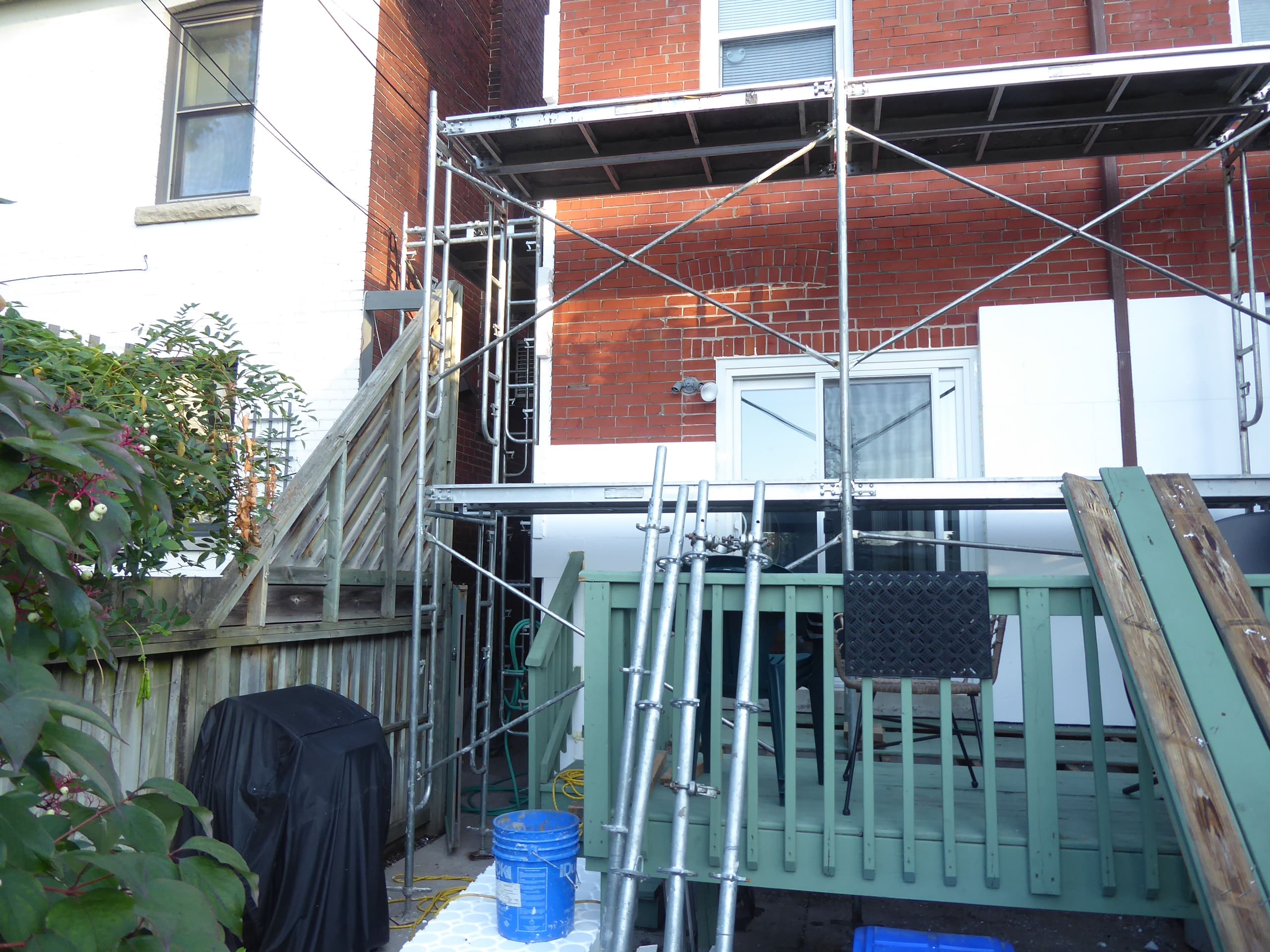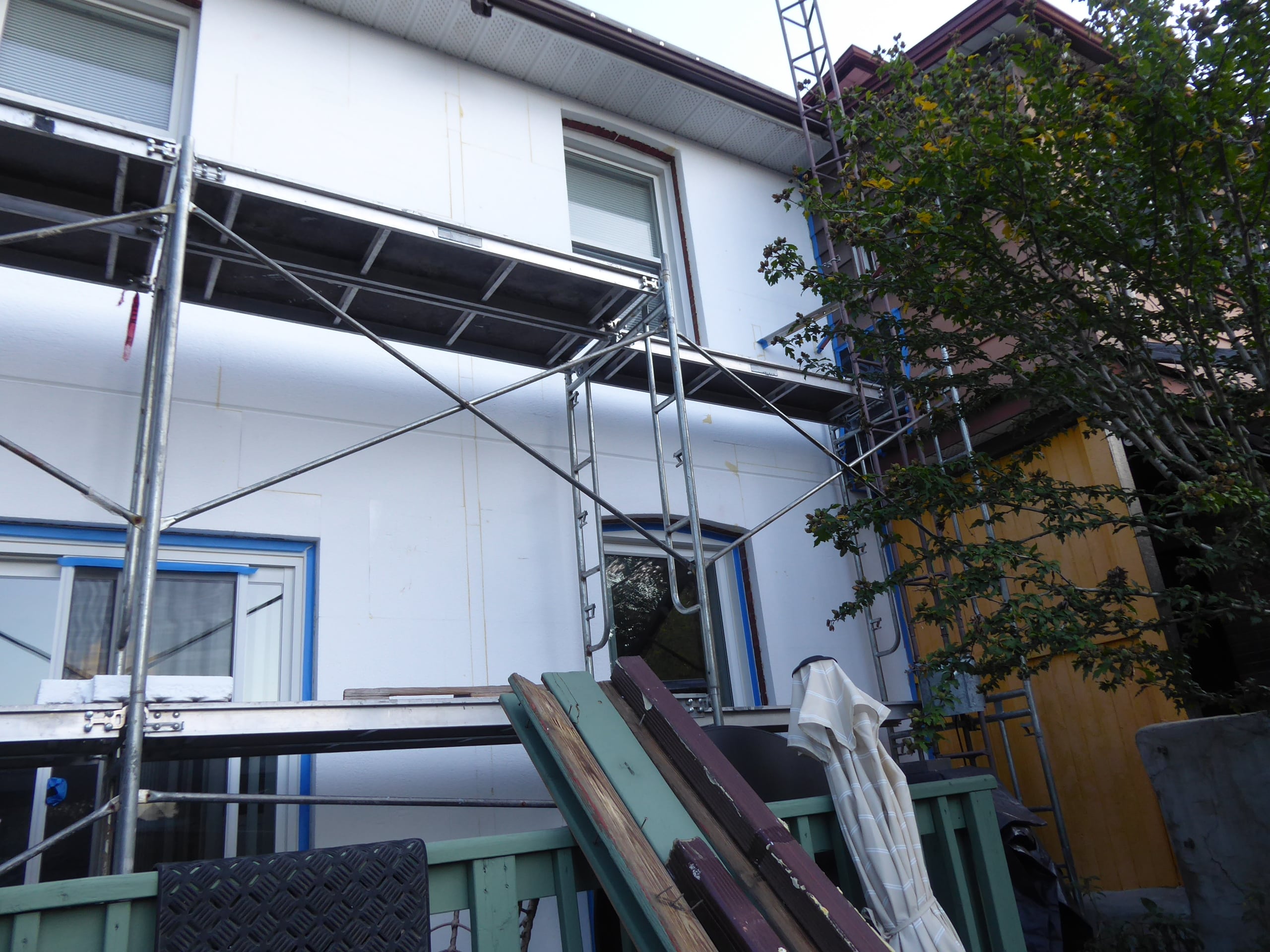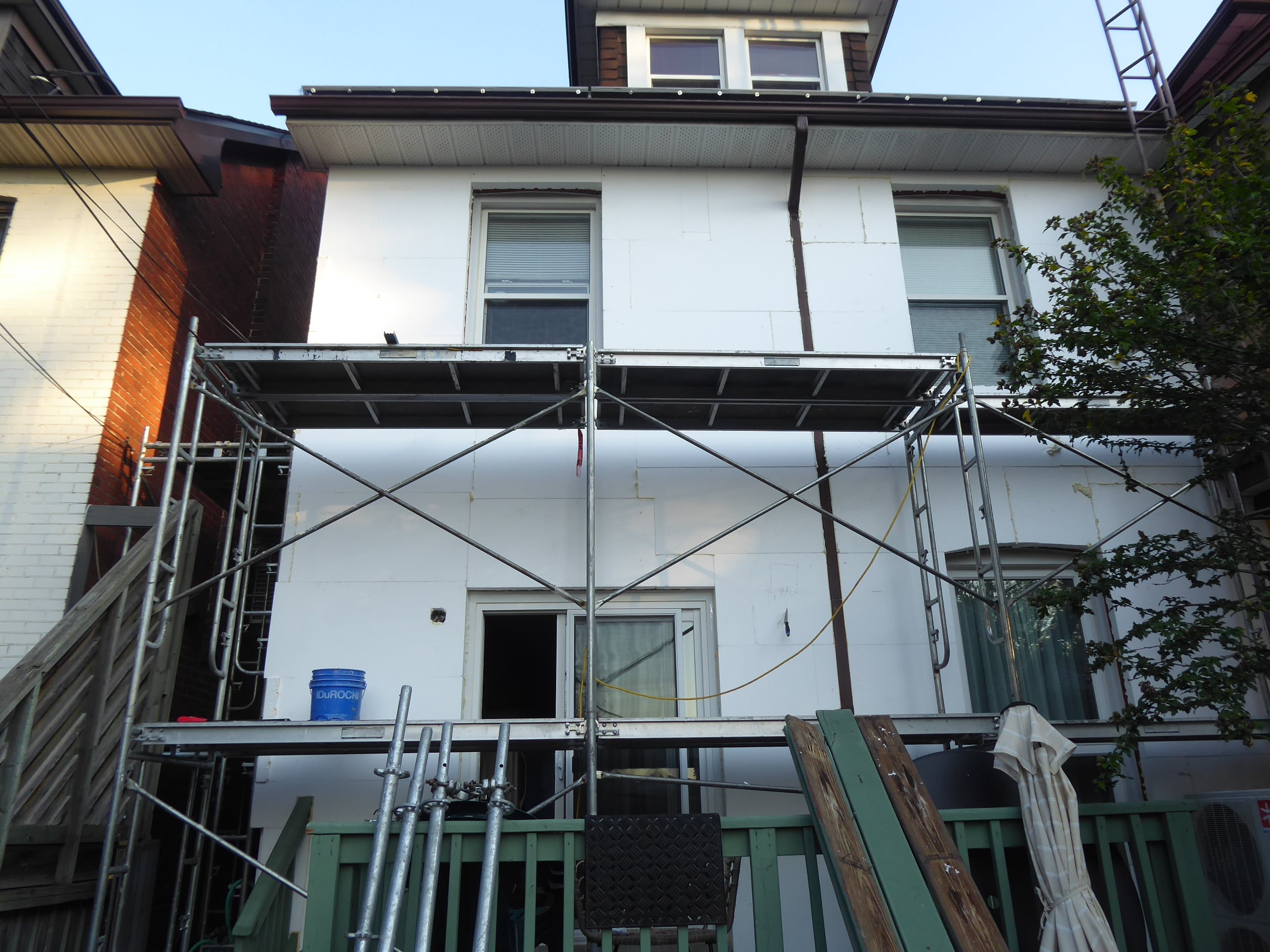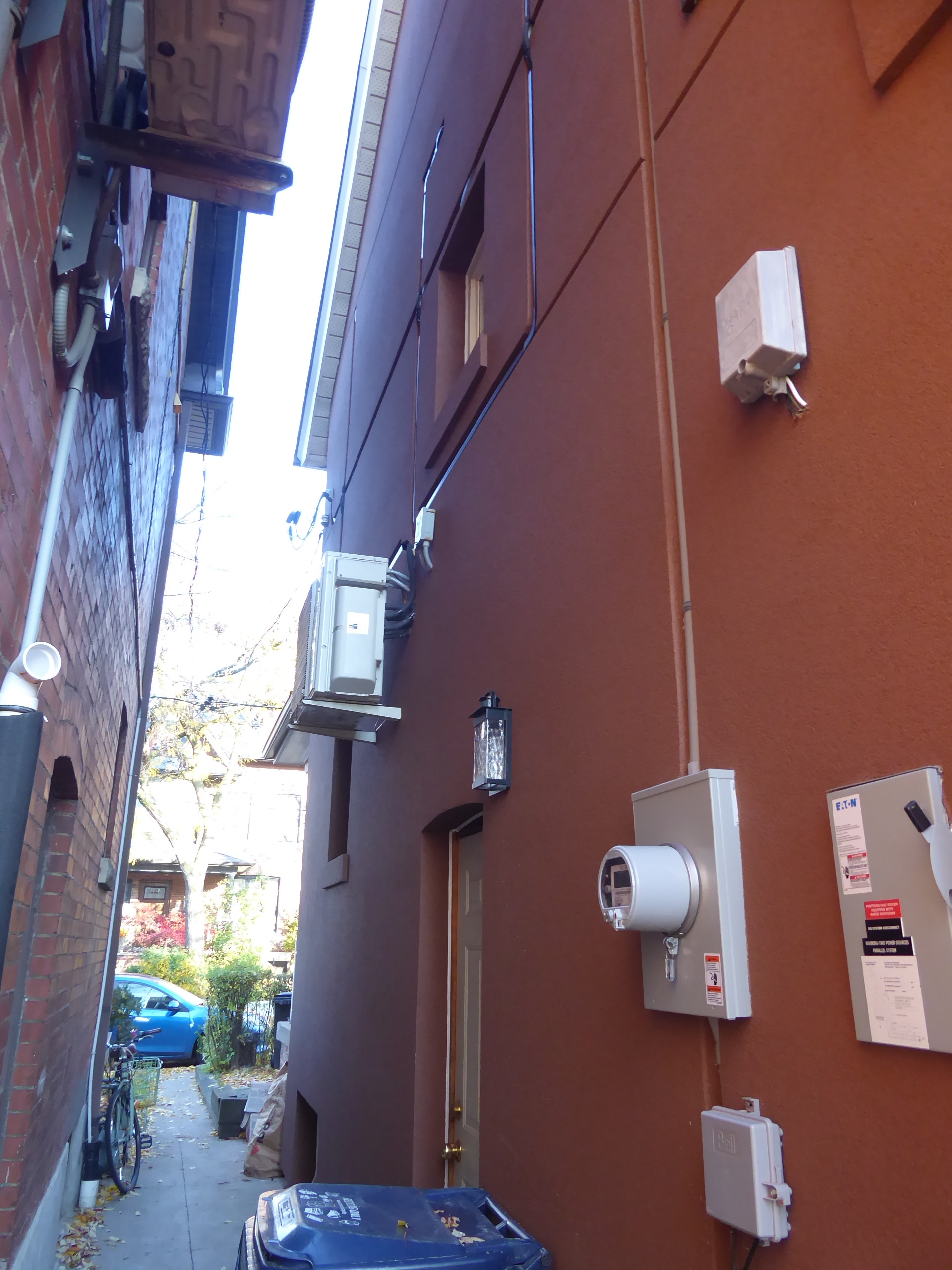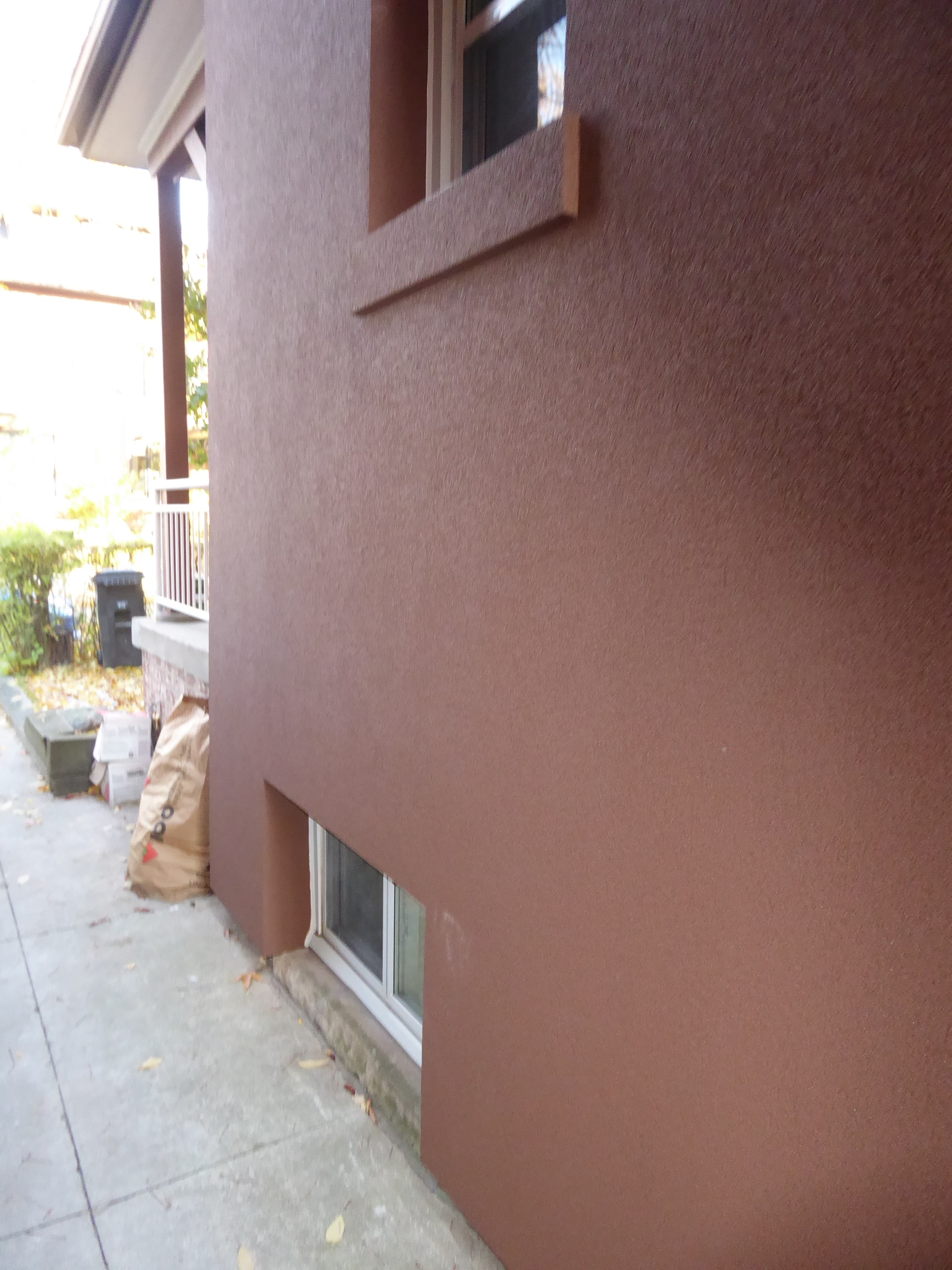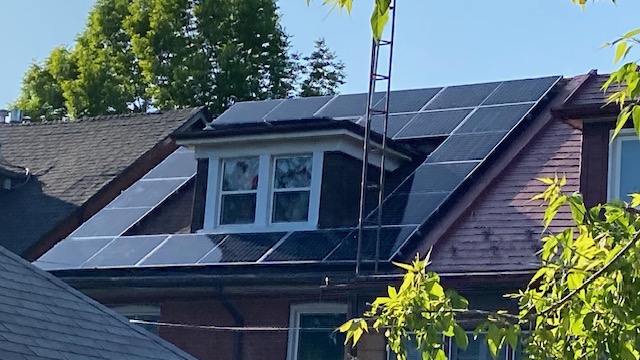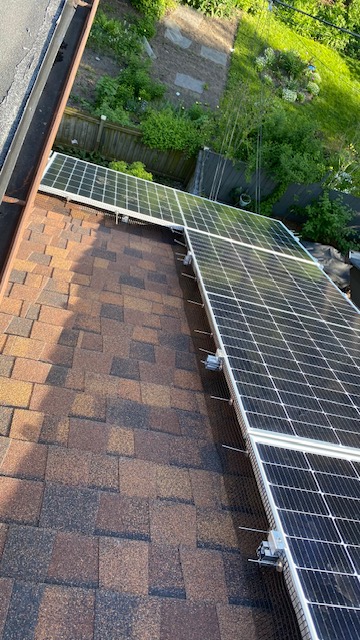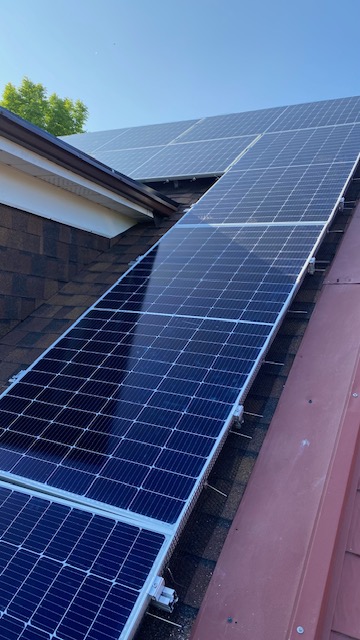Toronto Semi-Detached Brick
This 1908 home’s energy demands were cut by over 70% with insulation upgrades, electrification of mechanical equipment, and a photovoltaic system.
| Building Type | Duplex or Semi-Detached | Location | Toronto, ON |
| Year Built | 1908 | Foundation Type | Concrete (Full Basement) |
| Structure Type | Wood-Framed | Total Floor Area | 214.8m2 |
| Climate Zone | 5 | Heating Degree Days | 3520 |
| Retrofit Status | Complete | Year Completed | 2023 |
| Retrofit Phasing | No | Geometry Changed | No |
| Annual Energy Savings | 71.94% | Operational Carbon Savings | 5.3 tCO2eq/yt |
| Retrofit Type | Envelope and Mechanical | Performance Level | The home is not yet net-zero, but its energy consumption, and greenhouse gas emissions, have been dramatically reduced with insulation and mechanical upgrades, and the addition of solar photovoltaics. |
Project Team
- Windfall Ecology Centre ( Energy Advisor )
- Herc du Soleil ( Solar Installation )
Project Priorities
- Reduce Energy Consumption
- Increase Thermal Comfort
- Reduce GHG Emissions
Upgrades
- An exterior insulation finish system (EIFS) was utilized for added insulation
Project Description
Planning the Retrofit
This 1908 semi-detached home in Toronto underwent a deep energy retrofit to address poor comfort, high utility bills, and significant greenhouse gas emissions. Before the retrofit, the home was drafty, overheated in summer, and cold in winter—especially along exposed brick walls with no insulation.
The retrofit process was completed from March to November 2023. The approach combined major upgrades to the building envelope, electrification of mechanical systems, and the addition of rooftop solar.
Building Envelope Improvements
To reduce heat loss and air leakage, the retrofit team insulated both the interior and exterior of the home’s exposed walls, added insulation throughout the interior of the basement, and applied a stucco finish. A leaky window was replaced, and basement header sealing helped tighten the system. Overall air leakage was modestly reduced.
Mechanical and Electrical Upgrades
The retrofit replaced the aging gas furnace and water heater with a cold-climate heat pump and electric water heater. The gas stove and dryer were also replaced with efficient electric models. A second mini-split heat pump, heat recovery ventilator, and drain water heat recovery pipe were also added. These upgrades required a service panel upgrade and the removal of gas service altogether.
Solar and Electrification
The home’s solar array was installed mid-way through the retrofit, supported by a recent roof replacement and net metering agreement. Together with the mechanical upgrades, the transition to electricity cut fossil fuel use and brought overall energy demand significantly down.
Financing and Incentives
The retrofit made use of multiple programs:
- Federal home retrofit rebates
- Enbridge’s joint rebate program
- City of Toronto’s deep retrofit incentive
- Interest-free loan from the federal Greener Homes program
- Low-interest loan through the City of Toronto’s HELP program
Post-Retrofit Benefits
After the retrofit, the home saw large improvements in comfort, a substantial drop in carbon emissions, and lower energy bills—saving well over a thousand dollars annually. Insulation and air sealing removed drafts, stabilized indoor temperatures, and addressed long-standing cold spots and overheating. Full electrification meant the home could operate fossil fuel–free, with rooftop solar offsetting a meaningful portion of electricity use.
Lessons Learned
- An envelope-first approach—prioritizing insulation and air sealing before upgrading mechanical systems—proved highly effective, reducing both energy use and equipment needs.
- Further work is being considered to seal remaining drafts, suggesting that comfort gains often inspire additional action.
- Contractor readiness can pose barriers. Retrofit-specific training and experience are essential to support wider adoption.
- Early energy evaluations helped prioritize upgrades and set a clear path forward.
This project demonstrates that a well-planned retrofit can turn a leaky century home into a low-emissions, all-electric residence with significantly improved comfort and reduced energy demand.
Visit Green Commuities Canada’s website to learn more about this project.
Before & After
General |
Envelope |
Mechanical & Electrical |
Annual Energy Usage |
Carbon Emissions* |

